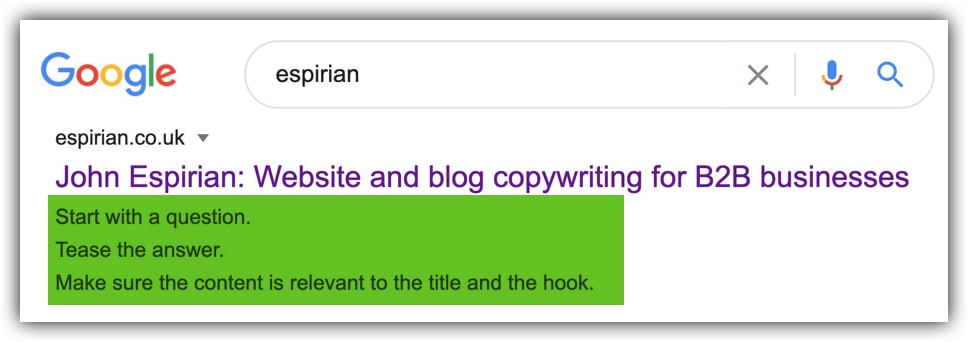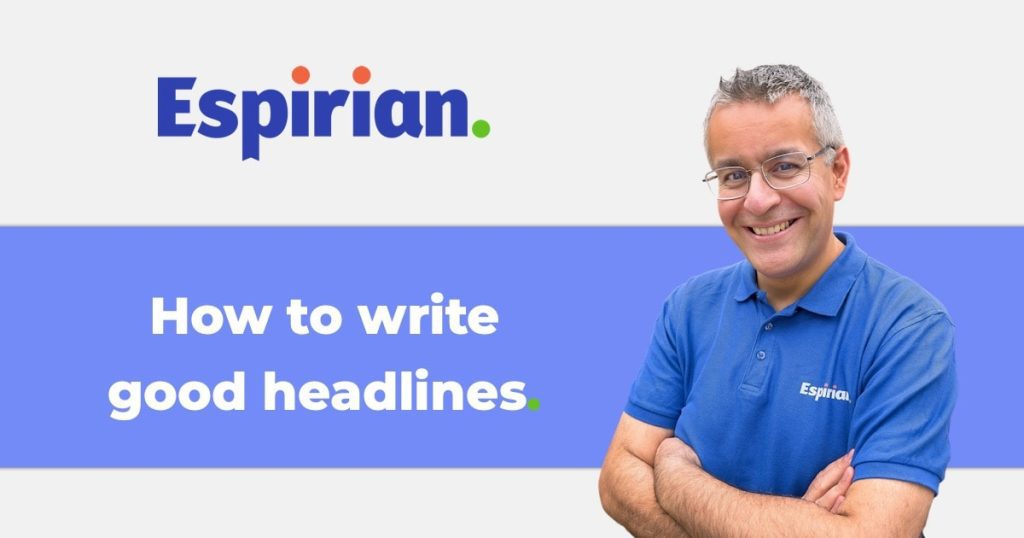Improve your headlines to help your content be found.
We’re all tired of “clickbait”: where the headline promises something that the rest of the content doesn’t deliver.
Here’s how to do better with your headlines.
- Add keywords to your headlines
- Start your headlines with “How to”
- Use numbers in your headlines, especially odd numbers
- Turn your headlines into questions
- Front-load your keywords
- Sensible headlines beat scandalous ones
- How can I test my headlines?
- Let’s wrap up
Add keywords to your headlines.
For me, the best headline reveals exactly what I’m going to get when I scan through the remainder of the article.
I think of the keywords people will search for when they’re sitting in front of Google. This gives me phrases that are 2 or 3 words long, and I try to include those phrases in my headlines.
When I wrote about people’s misunderstandings about sharing files and folders on Dropbox, my key phrase was “Dropbox sharing“.
When I wrote about advanced tips and tricks for searching Twitter, my key phrase was “Twitter advanced search“.
There’s no secret here: make the headline obvious enough that it sets the reader up for what follows.
Start your headlines with “How to”.
This is a great opening when you’re explaining a process. It makes clear that you’re showing people a step-by-step way to solve whatever problem they have.
Example: How to speed up Google indexing
Use numbers in your headlines, especially odd numbers.
People seem to love numbers in headlines, especially odd ones. The best number seems to be 7. Dates also work well.
Example: 7 ways to increase web traffic
Turn your headlines into questions.
Try writing a headline as a question. With voice search on the rise, this could help your content be found more easily. (People might do text searches with keywords, but they’ll say a whole question when speaking to Alexa.)
Example: How long should my blog posts be?
Front-load your keywords.
Put your keywords at the beginning of the headline and introduce the rest with a colon.
Example: Business blogging: the definitive guide
Sensible headlines beat scandalous ones.
Writing a clear headline can help your content rank well on search engines – and that’s anything but boring.
If you want to exercise some creativity, move the inventive writing from your headline to your metadata description. That’s the text that appears along with the title and link when your content is shown in search results.

You can also do the same for preview text that appears when you share content on social media.

Good metadata descriptions and preview text will help draw readers in – and it’s better to put the clever stuff there rather than in the headline.
Top tip.
If you use WordPress, the free Yoast SEO plugin makes it easy for you to set the metadata description and social preview text.
How can I test my headlines?
Try out your headlines by pasting them into one of these free tools: CoSchedule Headline Analyzer or Sharethrough.
Don’t rely on these tools, though. They can be helpful but they don’t guarantee success or failure.
CoSchedule Headline Analyzer sample headline scores (out of 100).
- 10: Business blogging guide
- 29: Twitter advanced search 2019
- 48: Business blogging: the definitive guide
- 53: The royal order of adjectives
- 56: Pen portraits: understanding your ideal audience
- 59: 3 false assumptions about Dropbox sharing
- 67: Martin didn’t want me to show you this …
- 68: How to find freelance work on LinkedIn
- 74: How to improve Linkedin engagement in 2019
Sharethrough sample headline scores (out of 100).
- 36: Business blogging guide
- 47: Twitter advanced search 2019
- 56: How to improve LinkedIn engagement in 2019
- 61: How to find freelance work on LinkedIn
- 62: Martin didn’t want me to show you this …
- 64: 3 false assumptions about Dropbox sharing
- 65: Pen portraits: understanding your ideal audience
- 67: Business blogging: the definitive guide
- 67: The royal order of adjectives
Let’s wrap up.
Your headlines are important and aren’t something to slap on at the end once you’ve written an article.
Be careful not to write headlines that are too sensationalist. They might work in the short term to grab attention on social media, but if you want your articles to be found, a more sensible approach to using clear, keyword-focused headlines is best.


